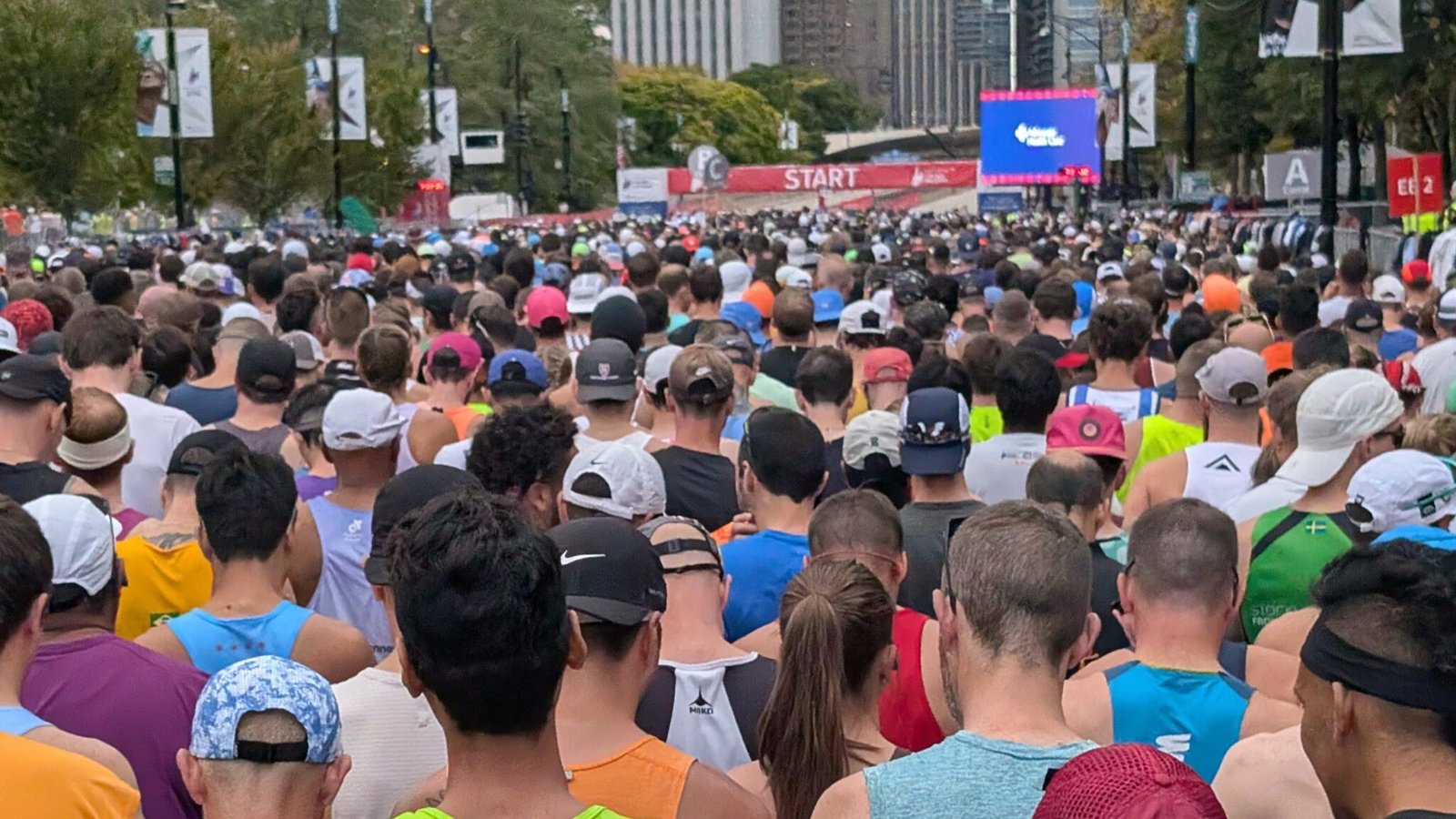Last month, I posted a lengthy analysis of the Chicago Marathon results. Part of that analysis was whether runners managed a negative split or not.
Subsequently, I’ve done some more thinking about this issue. After some discussions around the data, I came up with a different way to think about the problem.
Instead of looking at whether or not runners ran a negative or positive split – what if we could isolate runners who had a goal time and see whether or not they hit that?
Obviously, that’s difficult without surveying runners first. But we can identify one potential sample of runners – those who are attempting to run a Boston qualifying time.
I wrote up a more thorough analysis on Medium, and if you’re not a subscriber you can request a special link to read that here.
But in the meantime, here’s a glimpse into the data and what I found by analyzing the results from the 2024 Chicago Marathon.
How Many People Went Out at BQ Pace – and How Many Succeeded?
The first half of the problem was to figure out how many runners were attempting to BQ.
Now, it’s impossible to know for certain what a runner is thinking unless you ask them. But looking at the pace they run the first half of their race is a good proxy for that. People usually have a plan, and they at least kinda stick to it.
It’s the second half where things usually get off track.
So if we look at a runner’s split at the halfway point, we can assume that anyone running near a Boston qualifying time was probably targeting that time (or something similar). It’s too fast to just be out there for a leisurely jog, and most runners are going to have to work hard to hit that pace.
There were approximately 4,000 finishers who started out at BQ pace at this year’s Chicago Marathon.
Of them, about 18% actually finished beneath their Boston qualifying time.
In the visual above, you can see the distribution of the runners – in blue – and the number of qualifiers – in purple – by age and gender.
What Was the Most Successful Pacing Strategy?
The second half of the equation is why they were successful (or unsuccessful). What was their pacing strategy?
You can segment these runners into two groups – those who started out just above their BQ pace and those who started out just below. It turns out that of those who started out just above their BQ pace, very few (~5%) managed to run a negative split and notch a qualifying time.
Those who started out below their BQ pace, on the other hand, had a much better chance of qualifying. They didn’t all make it, but about a third did.
The other way to look at this is whether or not runners ran a negative or positive split. Of the runners who qualified, a similar percentage ran a small negative split as ran a small positive split. But many of the runners ended up with a large positive split, and they missed their qualifying times.
At the end of the day, the best strategy seems to be to aim slightly fast, and either hold on or speed up a little bit. But few runners end up with a large negative split, few runners successfully shave down their pace after starting slow, and many runners start too fast and suffer in the end.
What Was Your Strategy When You Ran a Boston Qualifying Time?
Have you been successful at qualifying for Boston? What was your strategy – starting slow and speeding up? Or starting fast and holding on?
Curious to here what worked (or didn’t) for you.
I’d also encourage you to read the full analysis on Medium, and again you can request a special link for that if you’re not already a Medium subscriber.
